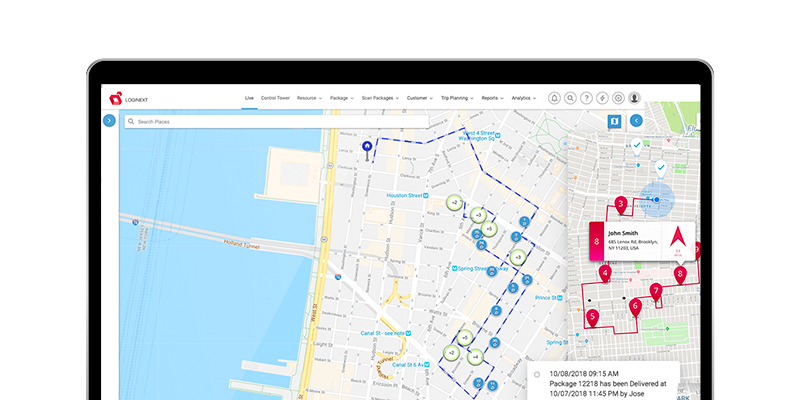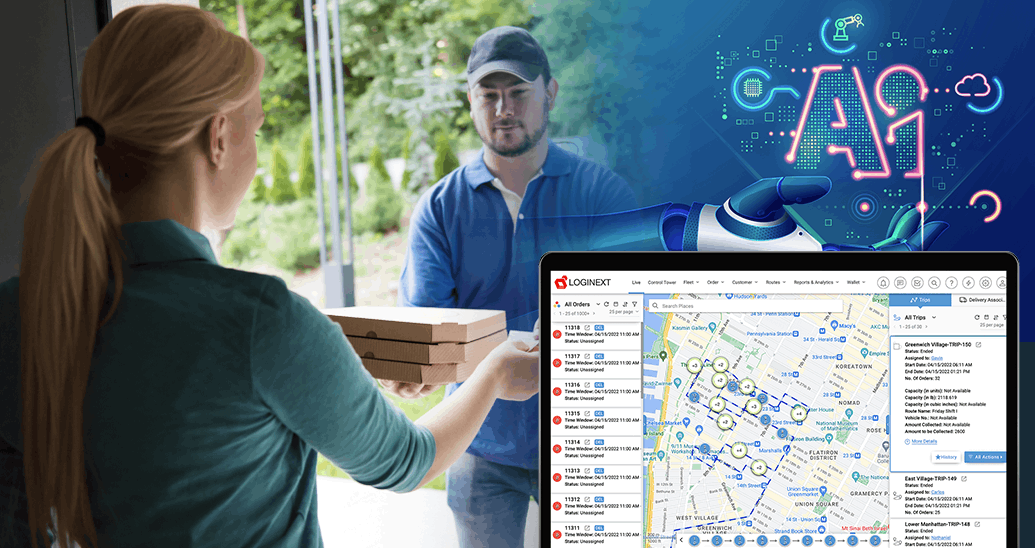Top Food Delivery Automation Trends to Watch Out For in 2023
The global online food delivery market size was pegged at around $130.2 billion in 2022 and is slated to grow to $223.7 billion by 2027! Accelerated due to the pandemic and increasing customer expectations in general, the sector is growing at a CAGR of 11.4%. Increasingly shortening delivery time windows and customers expecting food and other products quickly is an irreversible trend that has set in in the last couple of years. This has led F&B and QSR businesses to move towards an on-demand delivery management software.
What is Food eCommerce?
Well, typically when one says food delivery, one assumes it to be the delivery of fresh food items but the definition is wider. Food eCommerce is the sale of food & beverages (including packaged items) through an online store instead of a traditional brick & mortar store. There is an overlap between food delivery from restaurants and a more traditional CPG (consumer packaged goods) or F&B industry where packaged items like chips and biscuits would also be included in Food eCommerce.
What is Food Delivery Automation?
Food Delivery in general has grown exponentially as stated above and this has led to organizations thinking more deeply about bringing in efficiency when it comes to delivery. Fast food restaurant chains like McDonald’s, BurgerKing, and Starbucks which were traditionally heavy on dine-in have had to take home delivery seriously and dedicate entire teams to just take care of the increasing home delivery business. And this is where Food Delivery Automation comes in. There are several challenges in food delivery automation like lack of digitization and delivery driver management which has opened up an entirely new wave of innovation.
Top Food Delivery Automation Trends for 2023
Now, coming to the trends to look out for – from innovation in delivery models to cutting-edge technology for route optimization and more, there’s a lot happening.
- Carrier Aggregation
For an F&B restaurant chain, one of the biggest dilemmas it faces is regarding delivery drivers. Should one have an entirely in-house fleet or does one outsource deliveries? A food delivery automation platform like LogiNext comes in with a solution where a brand can use delivery drivers in the most optimal manner. Through Carrier Aggregation, everyone from their own drivers to drivers from 3rd party food aggregators to just external drivers, all of them come on a single platform with a different set of rules guiding their utilization. There will be collaboration across the board like how we recently integrated with Grab and McDonald’s.

- Advanced Route Optimization
This is a core pillar of any last mile delivery software but an evergreen trend. Advances in route optimization will keep playing a role in the refinement of food delivery systems. With more AI and ML working on larger data sets, route generation is getting more sophisticated. Real-time communication with the driver and end customer about precise ETA also results in a great experience.

- Sustainability
Reduction in carbon footprint is a direct result of route optimization and more optimized operation brought in with a cloud-based TMS software (check out sustainability calculator). But overall, brands are becoming increasingly more aware of sustainability. Right from more ‘aware sourcing’ to reducing packaging and helping environmental causes go a long way in making a connection with the current generation of consumers. More and more ways of focusing on sustainability in such a way that it does not just become a buzzword but actually creates an impact is a trend we’re looking forward to in the near future.
- Drones and New Tech in Home Delivery
We’re still a few years away from drones becoming mainstream for food delivery. These are primarily due to regulatory reasons and also the fact that drone technology still needs to evolve before it can be used at scale. But in 2023, one can expect more and more pilot projects where brands are testing out food delivery through drones or trying out automated delivery robots and such.
Direct-to-Consumer will get Stronger
Owing to the rise of dark kitchens and dark stores, entirely new ways of creating brands have come into existence. As the competition gets tougher with more platforms to sell food on and also more brands competing for the customer’s pocket share, one long-term solution is to create a strong direct-to-consumer channel. Brands will figure out ways to create more touch points with the end customer and also try to reduce reliance on 3rd party food apps when it comes to home delivery. This will result in a focus on creating their own logistics systems so that they can control the end customer experience.
Conclusion
Food Delivery Automation will be a top priority for F&B brands. Looking at all these trends, it is clear that brands across the globe are prioritizing the use of technology in their logistics operations by using best logistics software. Not only does this help them get more visibility over operations and get more efficient, such systems are incredibly helpful in providing a great delivery experience.

At LogiNext, we’ve worked with 200+ enterprises in 50+ countries, and this is a common discussion we have with CSCOs and operation managers across the board. If food delivery and home delivery automation are something on your mind too, click on the button below, and a last-mile delivery expert will get in touch with you.








@LogiNext